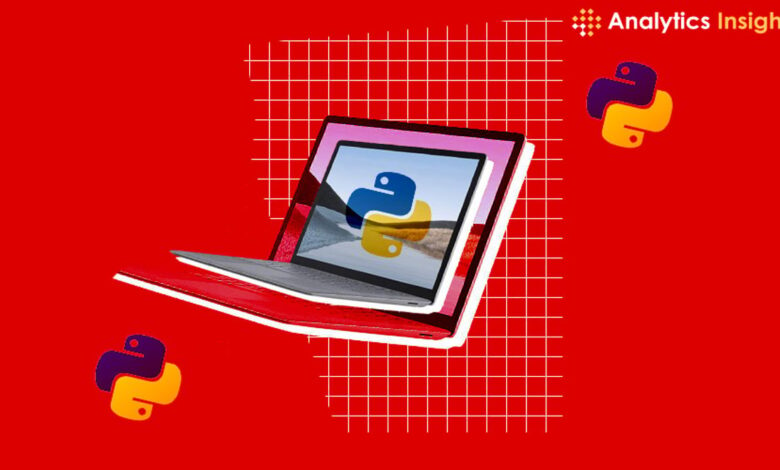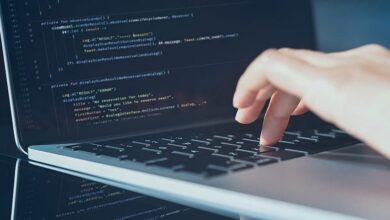Python Programming Language: Future Trends and Applications

Python, an open-source high-level programming language implemented by Guinod Van Rossum in 1091, experienced unprecedented growth. Renowned as an accessible and straightforward programming language used by developers, instructional designers, and data scientists, Python programming language is positioning itself as a favorite. Besides its capable partner library and support technology, Python programming language is an everyday language for AI, web development, and others alike. However, as we move forward, the number of trends that currently exist and the applications that take advantage of Python are continuously developing, showing us that Python is still on the rise, with a lot of potential for innovations.
Python emergence in Data science and Machine learning
In the world of data science, the Python programming language has carved itself into a prominent place, holding top ranks as one of the best tools for machine learning. Its highest level of simplicity, along with special modules such as NumPy, pandas, scikit-learn, and TensorFlow, have made the Python programming language an essential tool for data analysis and machine learning. The libraries or frameworks of the libraries possess powerful sets of functions for efficiency in data manipulation, statistics, and building strong models of machine learning.
Besides, it is quite natural that the days to come will witness a stretched use of Python applications in this industry. As competitiveness today requires individuals and companies to make their decisions on data, the market for machine learning and AI is expected to expand faster. Python programming, which has one of the most active communities and an enormous library of applications, is expected to take a leading role in the future development of these technologies. These libraries and applications are intended to enrich and make machine learning simpler for ordinary persons, rendering it more available to the rest of the people.
Integration with Web Development Frameworks
Python’s ease of use and various web frameworks, including Django and Flask, have contributed to attracting people to web development using Python. Django, which gives its name to an “all-inclusive” package, can be relied on to supply an extensive toolset and functionalities for web app development. Flask, in contrast, is a lightweight and turnkey platform that can be used to build custom applications with greater control and a broader range of functional tasks.
As web tech continues its upward evolution, the role of Python in this niche is also expected to rise. The higher use of asynchronous programming exemplified through the FastAPI framework, which made use of this syntax, is propelled by the async/await syntax introduced through Python 3. 5, which lets web app developers create high-performing web applications designed to accept and process traffic well. This theme is indeed meaningful for applications of the real-time web, including chat apps, live data feeds, and interactive dashboards.
Interoperability with front-end technologies and JavaScript libraries and frameworks is a great step forward, and many anticipate it. Another great feature of modern Python web development is the integration of tools such as Provide and the seamless matrix of popular JavaScript. This attribute will allow web developers to unlock the potential of Python in its full depth, thus generating more interactive and responsive web applications.
Python in the Internet of Things (IoT)
The Internet of Things (IoT) represents a quickly developing area in the field where Pythons roots are spreading deeper every day. IoT is a technology that interlinks multiple objects, including devices and sensors, allowing them to transmit data to and fro as well as interact with each other through the internet. Python’s readability and versatile library help to choose it as the No. 1 language for developing IoT because it is best suited for prototyping and data analysis in the discussion of the same.
MicroPython, a compact and resource-conscious Python for microcontrollers, makes the language of Python run on small, resource-limited gadgets. This flexibility is essential for IoT applications, where devices, unlike most computers, aren’t super-endowed with big processors and memory. Due to the expanding space of the Interconnected Internet of Things (IoT) technologies, which contributes to the development of intelligent homes, industrial automation, healthcare, and many other domains, a vital role in this area is foreseen for Python; thus, it becomes a fundamental tool of algorithmizing of various tasks.
Python Being Applied in an Academic or Education
Python’s understandable and readable syntax is why it emerged at the forefront of programming fundamentals and computer science pedagogy. Wherever it goes, educational institutions adopt Python as the introductory language for programming courses. This is precisely what they seek to learn. They avoid complex syntax traditionally associated with other programming languages.
This trend is projected to transcend the boundaries of Python as it moves from being just a language taught in academic institutions to an even more deeply embedded one. Providing access to a wide array of educational tools, which comprise online coding platforms, tutorials, and fundamental textbooks, will enhance the process of the program and facilitate growth. Further, non-state actors such as Raspberry Pi Foundation and Code.org are non-profit educational organizations contributing to the development of computational thinking. In addition, a fast-growing number of the org (organizations) provide free courses on programming that target the young audience. Python is often used, so the new generation of programmers is competent in this section.
Exploring the Forward Trip in Automation and Scripting
Python has an edge in automation and scripting. Tools automate repetitive tasks and process management. With its simplicity and multiuse capabilities, Python is good at orchestrating workflows. It can be applied to simple scripts and complicated automated fixtures. It helps programmers and system administrators organize processes and increase their productivity.
With automation already being widely implemented as a productivity booster and a cost-saving purpose, Python’s relevance in this specialty is likely to grow. Python’s interfacing with different platforms and systems, running along with broad automation libraries like Selenium, gives Python a place among the prominent participants in automation technologies.
Enhancements in the System Response
Although Python’s stronger sides include simplicity and ease of use time, the performance can still be seen in a critical light. Consequently, the exertions geared towards learning improved algorithms, metric learning techniques, and parallelized algorithms have gone a long way in boosting performance and scalability for more efficient applications. Projects like PyPy, a kind of Python interpreter that enhance Just-In-Time (JIT) compilation compared to the ordinary Python interpreter, are one of the strategies that highly improve execution speed for many Python programs.
Besides, multiprocessing using multi-core processors and the need for concurrent programming have played significant roles in the production of concurrency frameworks and libraries in Python. The module, as well as libraries such as Trio and Curio, provide developers with a strong base of tools to develop code in concurrency, making these applications extremely efficient and even capable of running multiple tasks at once. Notably, python is used for scientific computing.
Similarly to the areas of scientific computing, Python is the language where it has had many followers. For example, scientific libraries like SciPy can handle all kinds of numerical computations. At the same time, Symbolic Mathematics by SymPy and the graphics tools from Matplotlib allow the plotting of complicated data into intricate graphs. The interface capability of Python with lower-level languages like C and Fortran not only multiplies its native abilities but also increases its clout in info tech-based fields.
In the future, Python will likely remain one of the most popular tools in scientific computing. Still, as emphasis is placed on reproducible research and open science, this trajectory model can change rapidly. The inception of Jupyter Notebooks, an interactive computational environment, caused a revolution in the way researchers continue recording their work to others. Jupyter Notebooks, besides Python, also support other programming languages, and they can play a significant role in blending code, equations, graphics, and texts to promote science collaboration through data-intensive studies and terms clarity.
Conclusion
Python’s flexibility, surprising ease of use, and a large environment have enabled it to rise as an essential programming language. Their areas of application are multidisciplinary, running like a thread from the mathematics of the web to big data, the Internet of Things, and scientific computing. While technology keeps on developing and looking for new tools, Python is prepared to settle with new tricks, so it will be able to keep pace with improving performance, scale, and interoperation with emerging technologies.
FAQs
How will the future of Python be?
Python will rule the world at the speed of light. Of course, it has started to take its place as the language for web development, data processing, AI, machine learning, and automation. The Python programming language’s data mining ability will keep taking center stage as the world shifts to data-based decision-making.
What are applications in Python programming?
Python has been gaining prominence as a powerful, high-level programming language that can handle web development, operating systems, AI, machine learning, numerical computation, mobile apps, and game development tasks well.
Will Python programming be a thing in the future?
Python not only goes by the hand as one of the most popular programming languages globally, but it is also in the pool of the most promising for occupational prospects. Python developers are demanded expansively on a yearly basis.
What are the pros of Python in relation to job opportunities?
No, knowing Python is not a sufficient condition for getting a job, but knowing Python and other soft skills, as well as getting a good education, can certainly increase your chances.



